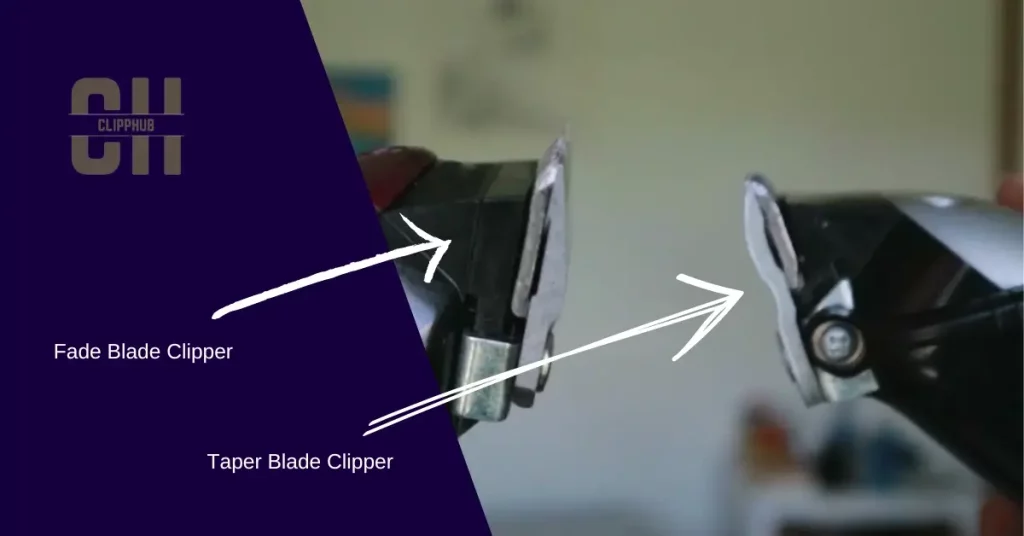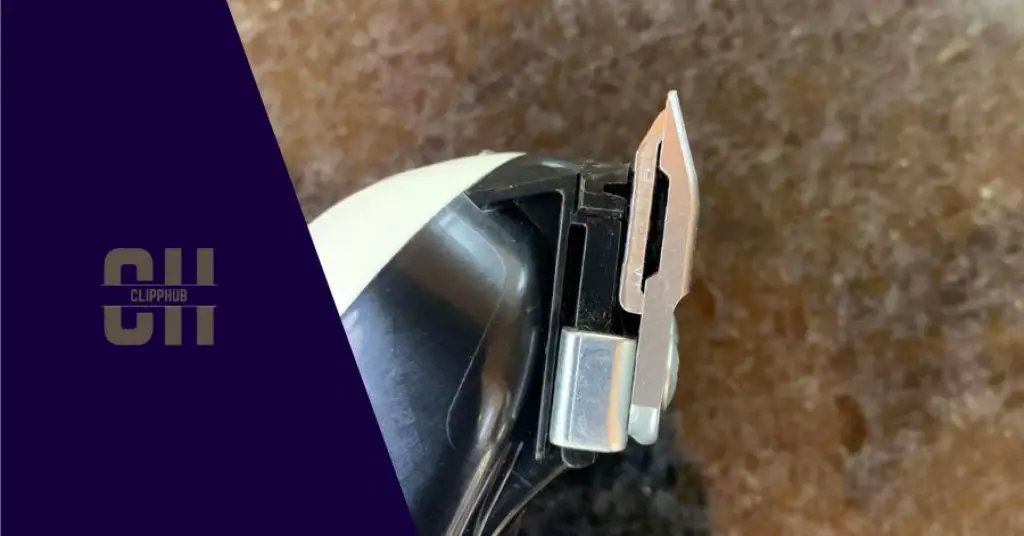
We all want the best-looking cuts. Sharp and clean with expression. But at times our clippers won’t allow it.
But why is that?
If you’re asking yourself, why are my clippers pulling hair?… well, you are in the right place for answers.
In this article, we’ll go through the 5 common reasons why your clippers could be pulling hair, as well as simple steps you can put in place to get your clippers cutting well once more.
Let’s geit into it.
Why Do Clippers Pull Hair?

Hair clippers can pull hair for a few reasons, the most common reasons are:
- Blunt/ Damaged blades
- Low-quality/ bad hair clipper oil
- Incorrect tension/alignment on blades
- Overly coarse hair
- Using the wrong technique when cutting hair
Hair Clippers Pulling Hair
Understanding the causes behind clipper issues is essential. If not addressed, your clippers may become ineffective.
Let’s delve into how to resolve these problems.
How To Stop Clippers From Pulling Hair

BLUNT BLADES
This is the main reason why your clippers pull hair.
Simply put, if your blades are blunt they won’t be able to slice through the hair as cleanly.
Blunt blades start at the teeth, so you need to thoroughly inspect them, both the cutting blade and front cutting rail blade

To add to this, if the teeth of your blades are damaged/missing or slightly worn out this too can cause blunt effects on your clippers.
The teeth of both your blades should be straight with no gaps and there should be a clear and consistent shine.

If you can’t visually see missing damaged teeth, you can feel them out with your finger.
Run your finger across both blades and try to feel any inconsistent gaps. If you feel a slight prick or an inconsistent gap, then you have a tooth problem.
If you notice missing teeth, blade chipping, or major damage it will be difficult to fix and you most likely will have to replace your blades.
You won’t get much use out of blades that are on their last legs.
However, if you seem as though everything is intact, but notice little signs of wearing such as below:

If you see these signs, it means your blades are dull. You should sharpen them.
BUT…
You need to make sure the hair-pulling isn’t caused by the other reasons in this article. Unnecessary blade sharpening wears your blades out and reduces their longevity.
It should only be done as the last fix.
Once you’ve confirmed it is the blade at fault, check out these two articles which you can use to sharpen your clippers:
How to Sharpen Clipper Blades With a Stone (Step-By-Step)
How To Sharpen hair clippers with sandpaper (Full Guide)
New clippers pulling hair
Now… this is the reason why newer hair clippers may oull hair and it’s siomply because some cliper users bad hair clipper oil or no clipper oil at all…
BAD HAIR CLIPPER OIL
Using the wrong hair clipper oil will hurt your clippers. But not oiling your clipper blades at all will kill them off.
You saw those wearing spots I showed above, it happens when the cutting blade and guard blade run across each other for too long without a lubricant present to reduce the friction.
Failing to do this is often why new clippers pull hair.
If you don’t oil the blades, friction increases. This makes blades uneven and they may shake.
Without action, your blades will wear away at each other, Put this all together and you’ll have weak blades that pull hair.
If you do consistently oil your blades but with the wrong oil, this can equally be damaging. Using thick oils such as vegetable oils will cause problems with your blades.
While they can lubricate your blades temporarily, over a long period they can cause serious damage.
Thick oils like vegetable oil have high-fat contents and stick to the surface easily. These oils can work their way inside your hair clippers and attach to vital internal parts like motors attracting dirt and debris.
This dirt/hair can jam your motor or significantly reduce its power output. This reduces the speed the blades can cut and causes your blades to pull hair.
So look to oil your blades with a petroleum oil-like mineral, below are some of the best hair clipper oils available.
WAHL HAIR CLIPPER OIL Best overall
ANDIS HAIR CLIPPER OIL Rust prevention
OSTER HAIR CLIPPER OIL Quick spreading
I speak more on each, in my best hair clipper oil guide.
Oiling your clippers can help but they may just be touching the surface of your problems.
If you take your blades part and notice your clippers look like this:

You will need to clean your clippers entirely.
The very reason why your clipper may not cut is that there’s so much junk in the way of all your major components (especially the motor)
Check out this article on how to clean your clippers as well.
Clean Clippers With Alcohol (The Ultimate Guide)
Incorrect tension/Alignment on blades
When it comes to blade tension the saying is:
Your blades should be at a sweet tension spot or they will pull hair.
Hair clipper blade tension changes from clipper to clipper, You can find the correct tension for your clippers in its manual but if you don’t have that, there’s a simple test:
Time needed: 2 minutes
How to check if your hair clipper blades have the right tension.
- Step 1
Turn off your clippers
- Step 2
Find the top cutting blade on your clippers – (the blade you visibly see move ad the hair clipper is on)
- Step 3
Using your index finger push the side of the cutting blade inward with relative force. (Do this once or twice from either side). Do not do it too much as you could miss-align the blades.
The blade should easily slide across without too much friction or movement.
If you have a hard time pushing across, the tension is too much but if it’s too easy (your blades slide across without much effort) then it’s too loose.
But if you do have problems, here’s how you can fix them.
To fix this problem you need a screwdriver.
How To Fix Hair Clipper Tension
Set the tension on your blades
Step 1: Screws
Find the screws on the back of your hair clipper.
Step 2: Find out
After your test depending on the problem, you need to figure out whether you’re going to tighten or loosen the tension in your blades.
If your blades need tightening, turn the screws clockwise if they need slight losing to turn them anticlockwise.
Do this very slowly on both screws and do the tension test as you screw.
When you feel the tension is right, stop.
Now unscrew the blade slightly so you have wiggle room for the back cutting rail to align the blades.

How to Align Your Hair Clippers with Tension
Quickly align your clippers with the tension applied.
Step 1: Asses
Go to eye level with your blade teeth
Step 2: Close the blades
Close the clipper lever and make sure both blades are straight.
Step 3: Correct Gap
Check to make sure there is a slight gap between both blades, if there isn’t move the front cutting blade up or down until the is, about the width of a credit card.
This video illustrates how to set the right gap – watch from 2:25 – 4:40 then come back to the steps last steps.

Step 4: Align correctly
Make sure your cutting blades are aligned (straight).
Step 5: Finish up
Once everything is aligned, slowly tighten your screws to the correct tension point you found earlier.
Now your clipper and your blades should be fixed.
Correct alignment is important too.
Blades need the right tension and alignment. If not straight, they can pull or cut hair unevenly.
Extra
Before you tighten up the tension screw, you could look to zero-gap your blades, it’s not mandatory and they are some things you need to watch out for, but it can help give your blades some extra bite as they’ll cut closer.
You can read more in my guide on zero gapping below:
The Ultimate Guide to Zero Gapping Clippers: (All You Need to Know)
Coarse hair
This is a simple fix. All you have to do is make sure your work is as knot-free as possible.
Hair comes in all forms and hair clippers are built to tackle all kinds of hair. However, that doesn’t mean they won’t struggle. The struggle is what causes hair-pulling.
You need to make the hair your blades work on easily. The easier it is the better the blades can cut.
So before a cut, try:
- Remove knots
- Make hair straight
- Clean hair of dirt and debris
Doing this puts clipper blades through less stress and frees them to cut hair not fight it.
Now all you have to do is partner this with the right cutting technique as well as understand what type of blade you actually have on your clippers.
Using The Right Technique

Depending on whether you have a fade blade or taper blade, you have to adapt how you approach cutting hair if you don’t want your clippers to pull.
wahl clippers pulling hair

With a tapered blade, you can use your clippers normally, the flicking motion that comes with using these clippers come naturally due to the curved out shape of your blades.
But with a fade blade, which is the most common type of blade, you want to flick up in slow motion to avoid your blade grabbing and snatching hair – as it doesn’t have that natural curve.
If you have a fade blade, you’ll tend to find if you don’t have the right technique down, your clippers will pull hair!
You can read more on this in this guide:
Fade Blade vs Taper Blade (Battle of Blades)
This video goes more into the process at 1:38
If you’ve tried all these fixes and still face issues, consider sharpening your clippers.
You can get this done professionally if you would like the best results but I advocate for anyone to learn it as it can save you money and time.
If you need to sharpen your blades I provide guides on how to sharpen hair clippers with a grindstone and how to sharpen hair clippers with sandpaper
Conclusion
In this article, we covered the reasons your clippers pull hair.
These are:
- Blunt/ Damaged blades
- Low-quality/ bad hair clipper oil
- Incorrect tension/alignment on blades
- Overly coarse hair.
- Wrong cutting motion while using clippers
Top Takeaways for Tug-Free Hair Clipping:
- Blunt Blades: The primary reason for clippers pulling hair. Regularly inspect and sharpen blades for optimum performance.
- Oil Matters: Use petroleum-based lubricants and avoid low-quality oils. Oil your blades every 2-3 uses to reduce friction.
- Tension and Alignment: Blades should be neither too tight nor too loose. Ensure proper alignment for a smooth cut.
- Hair Prep: Untangle and straighten hair before cutting. Clean hair ensures blades don’t overwork.
- Technique: Adapt your cutting approach based on the type of blade (fade or taper) you have.
If you have found this article helpful, please check out other related articles on this topic and comment with your experience.


















